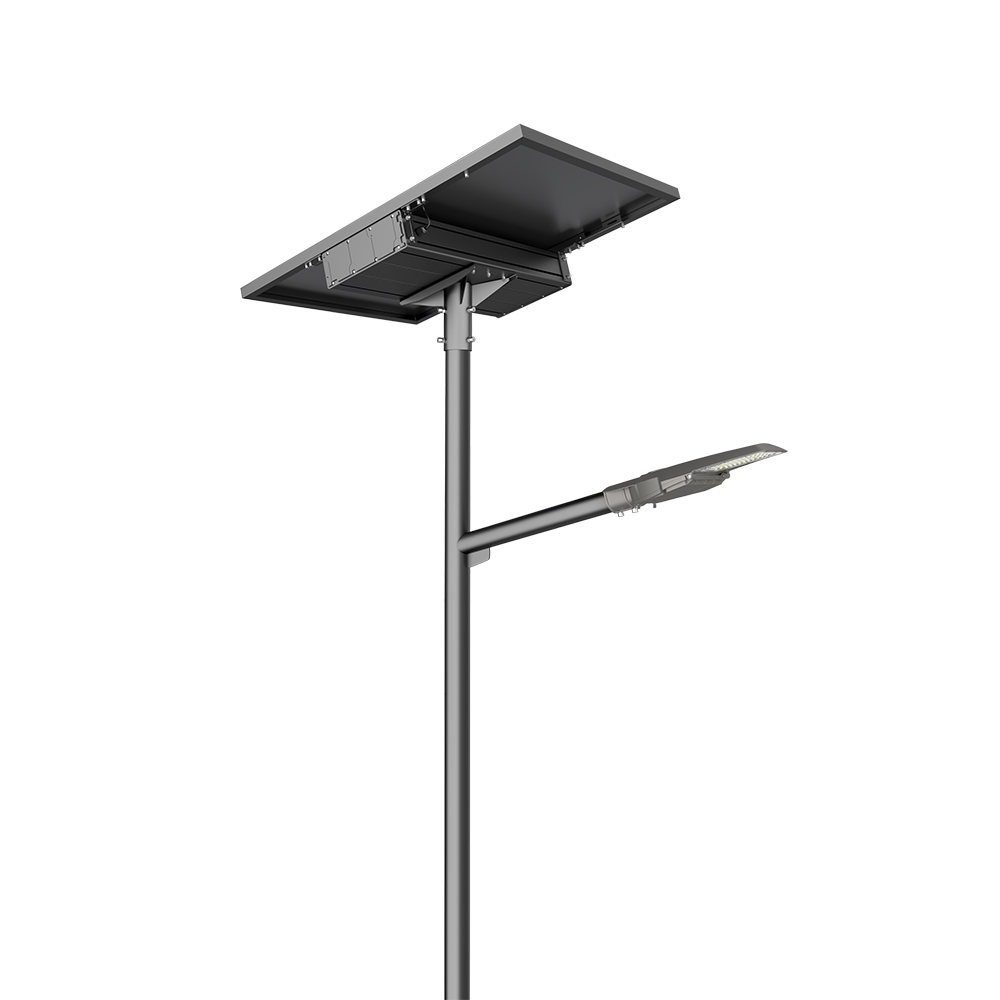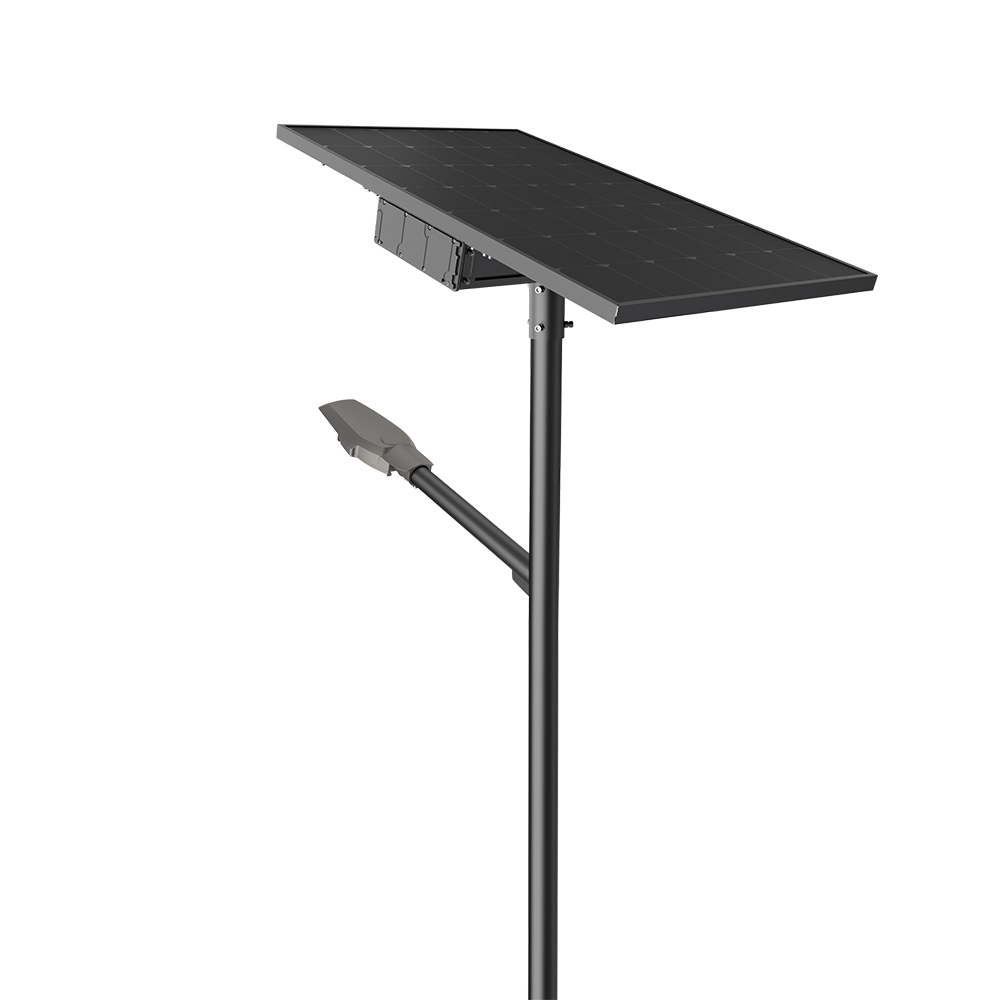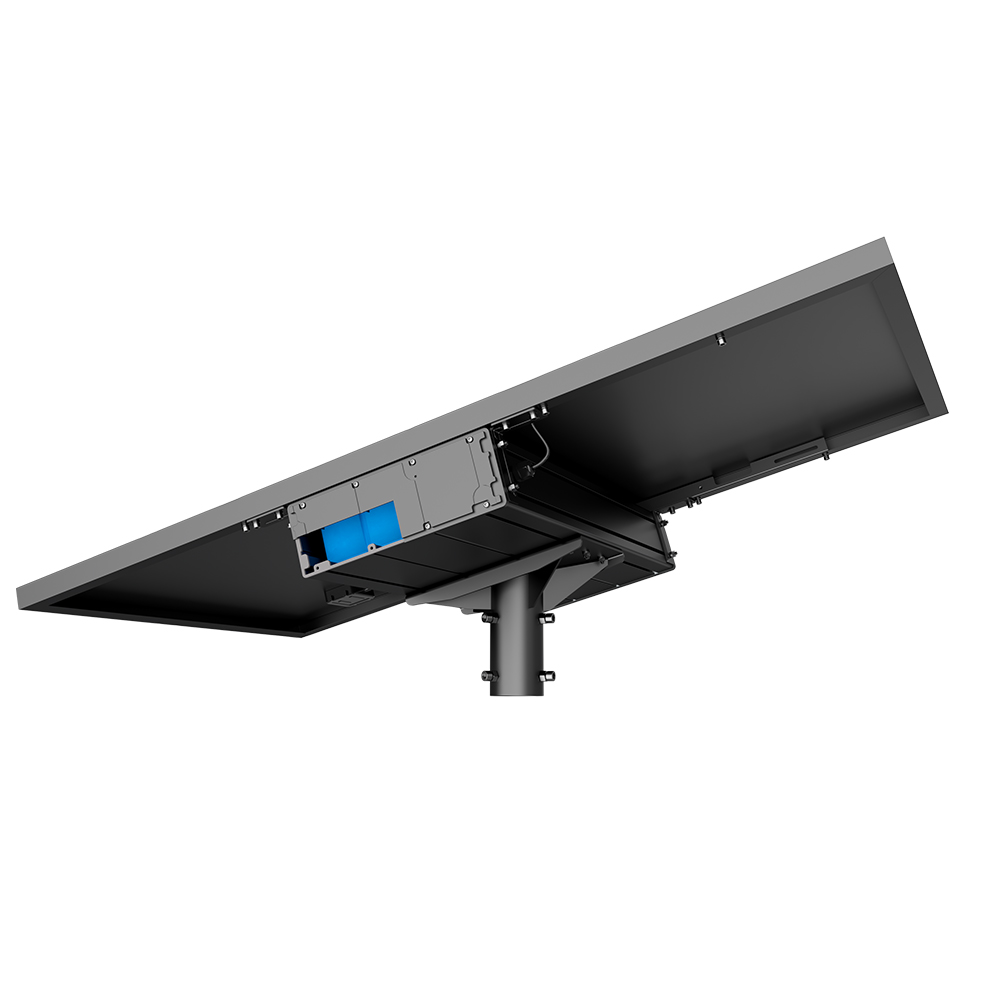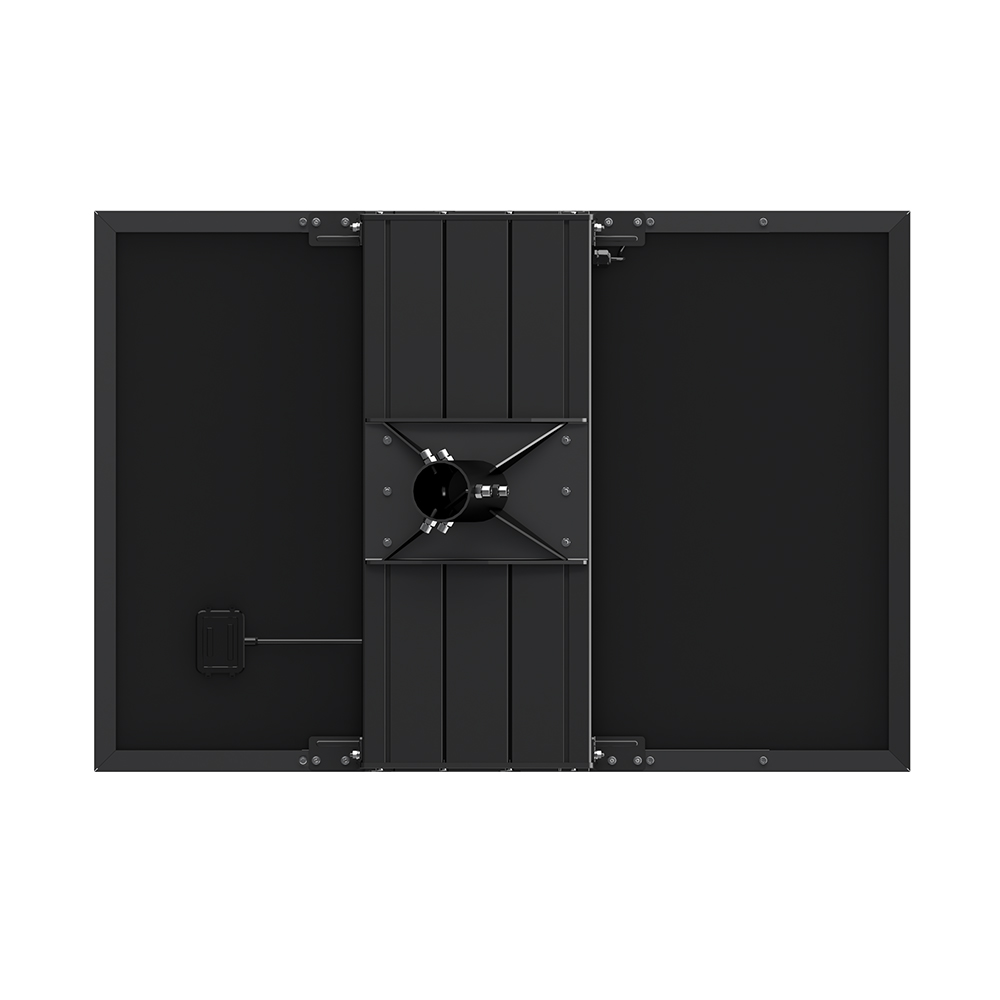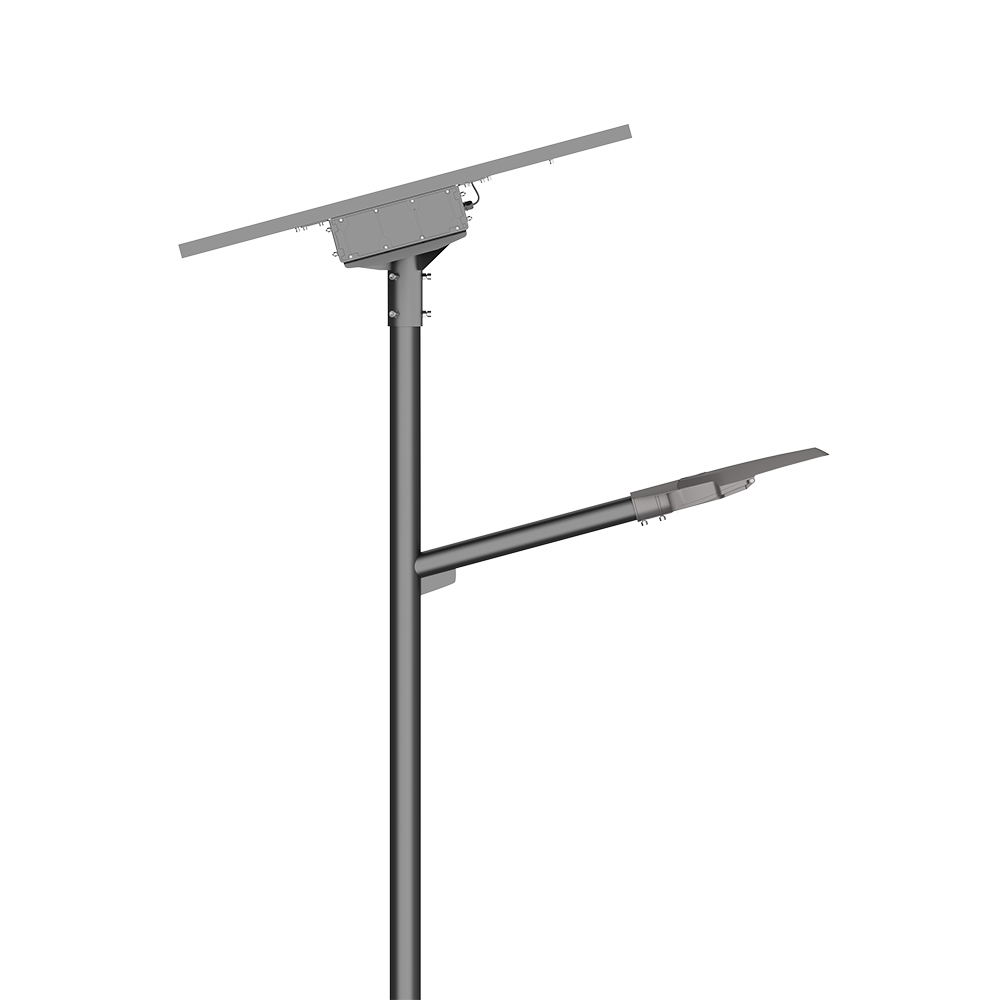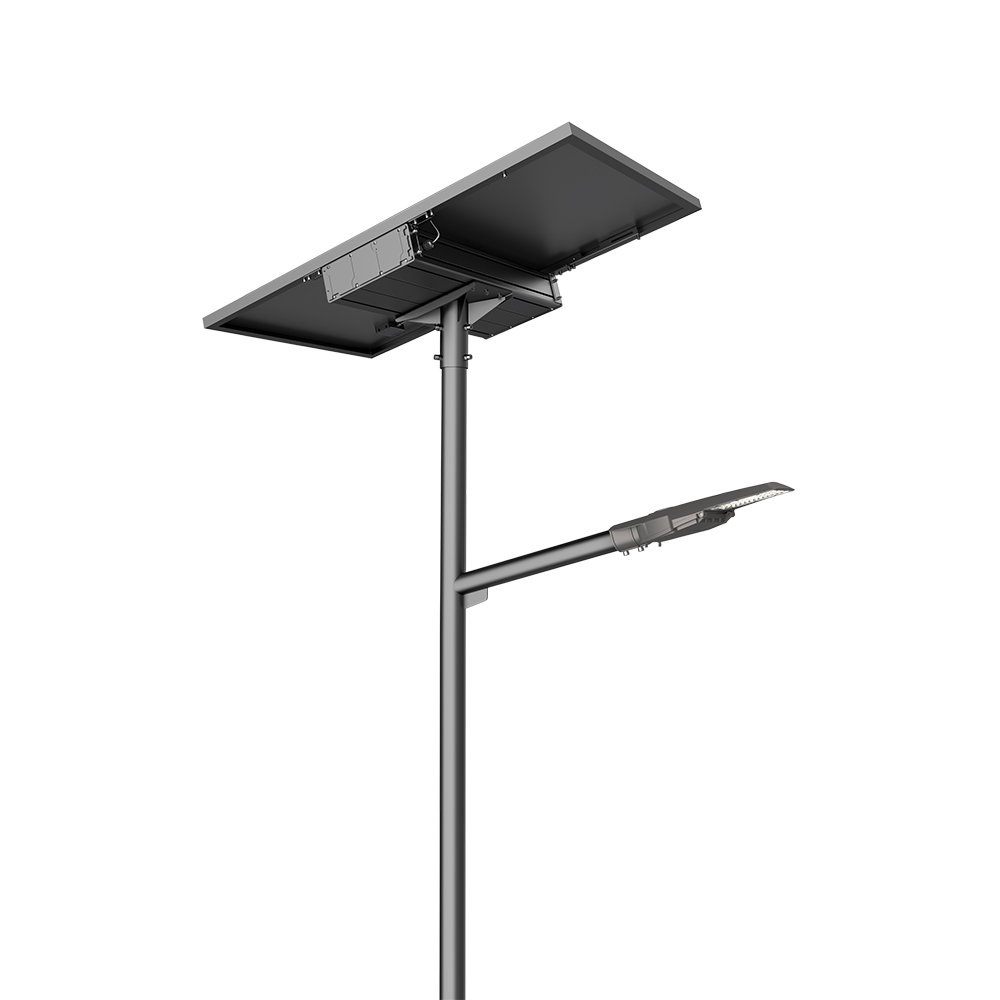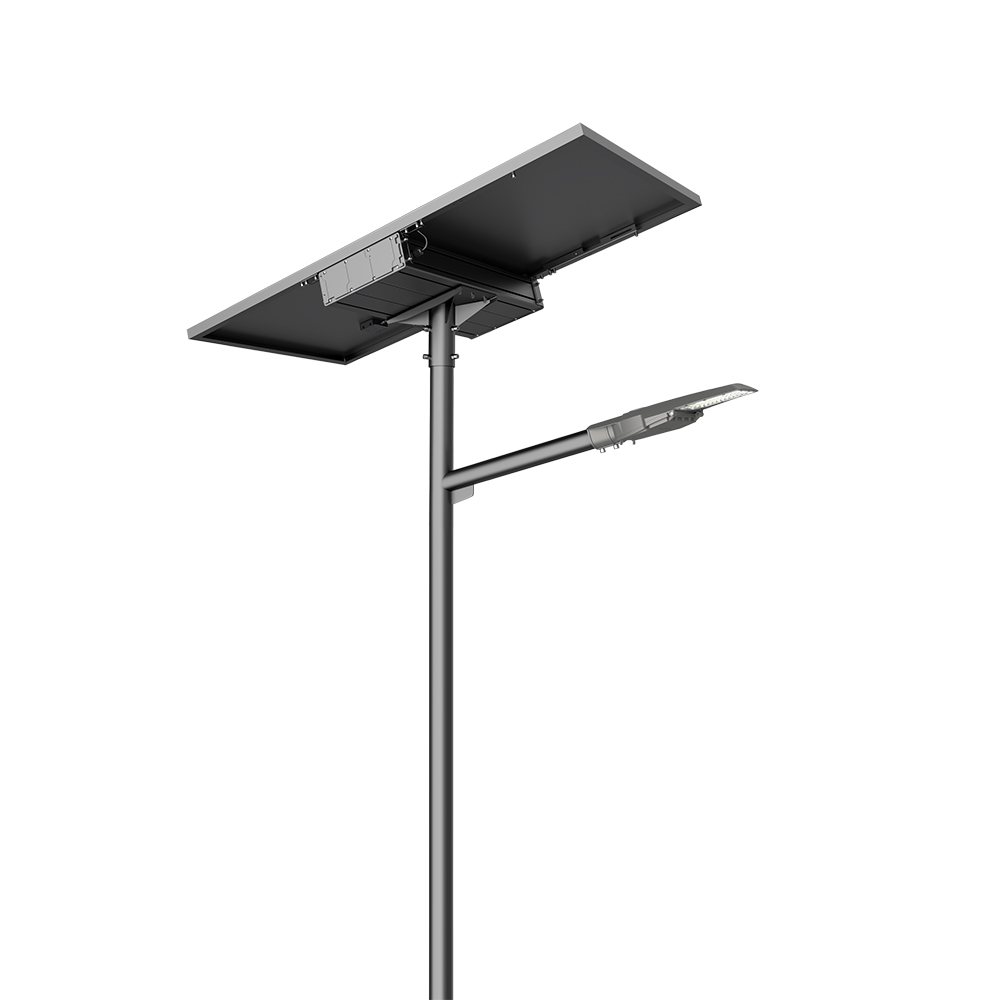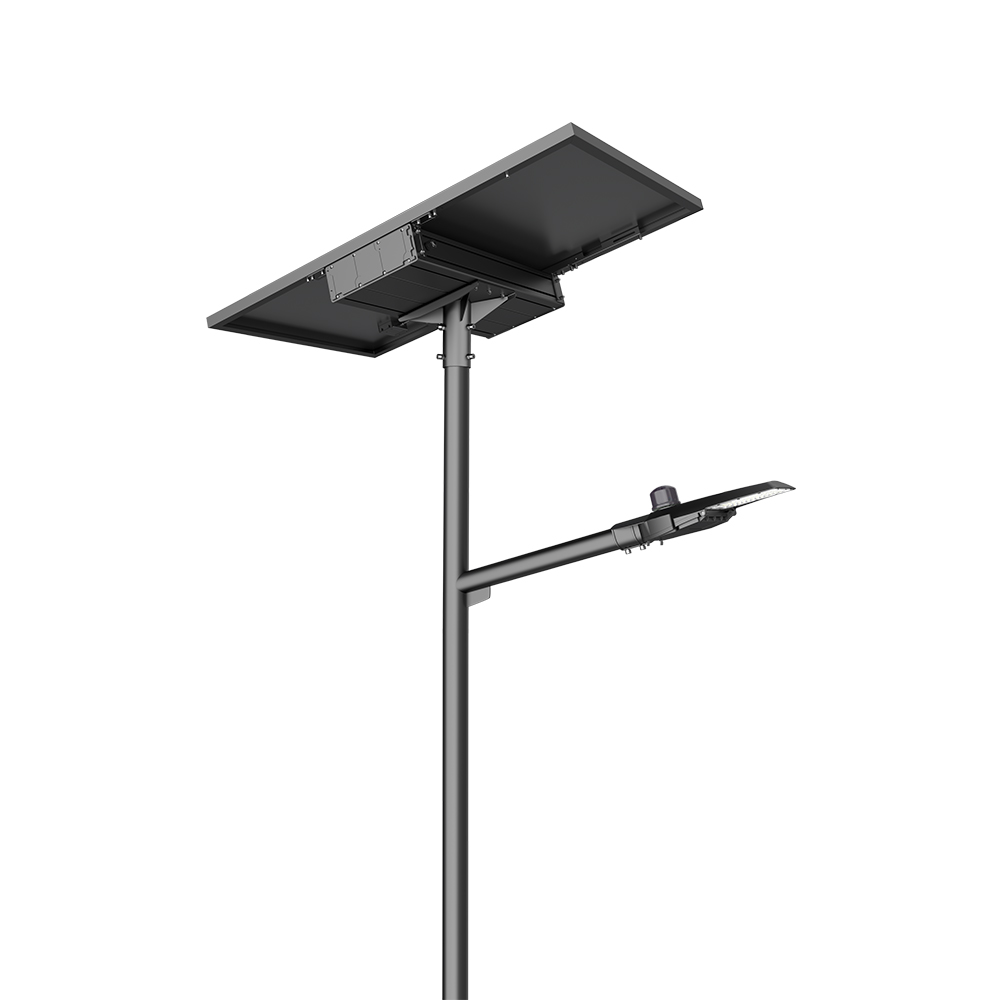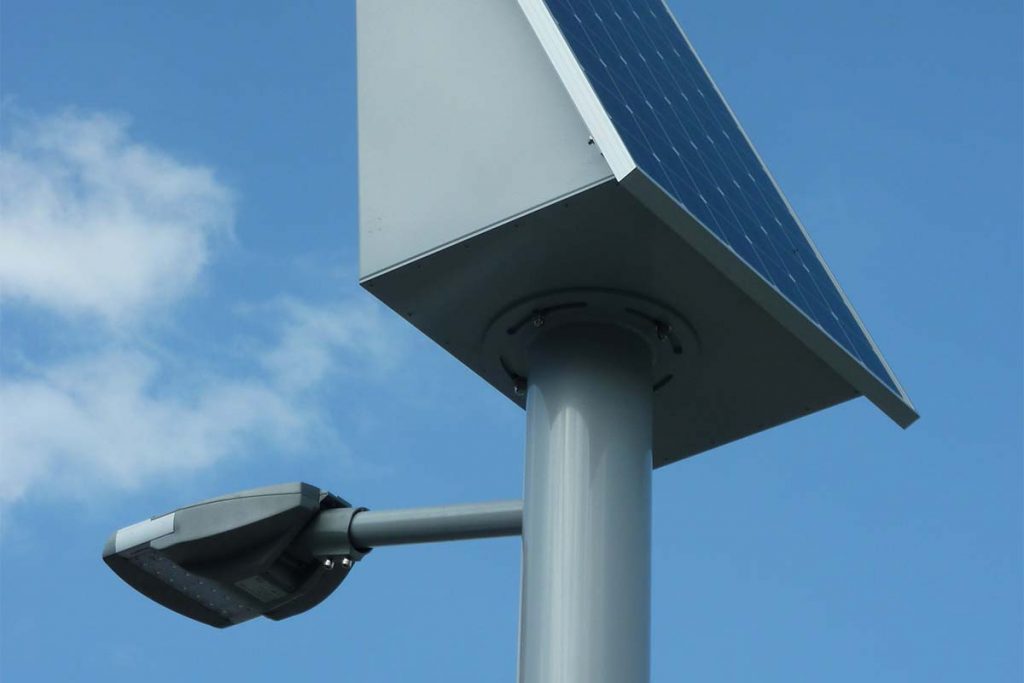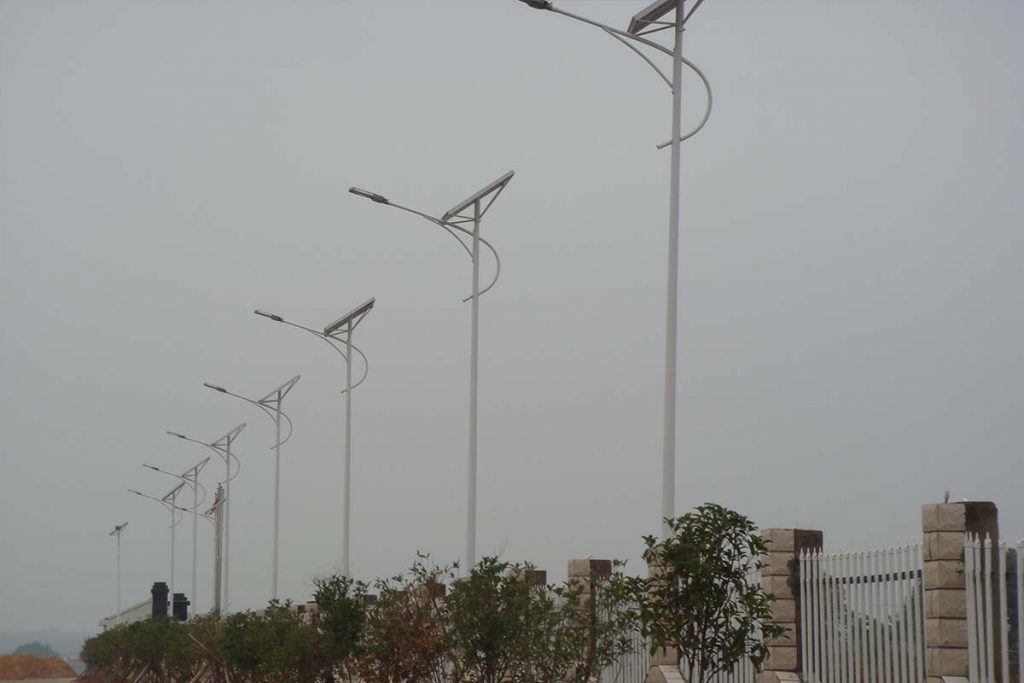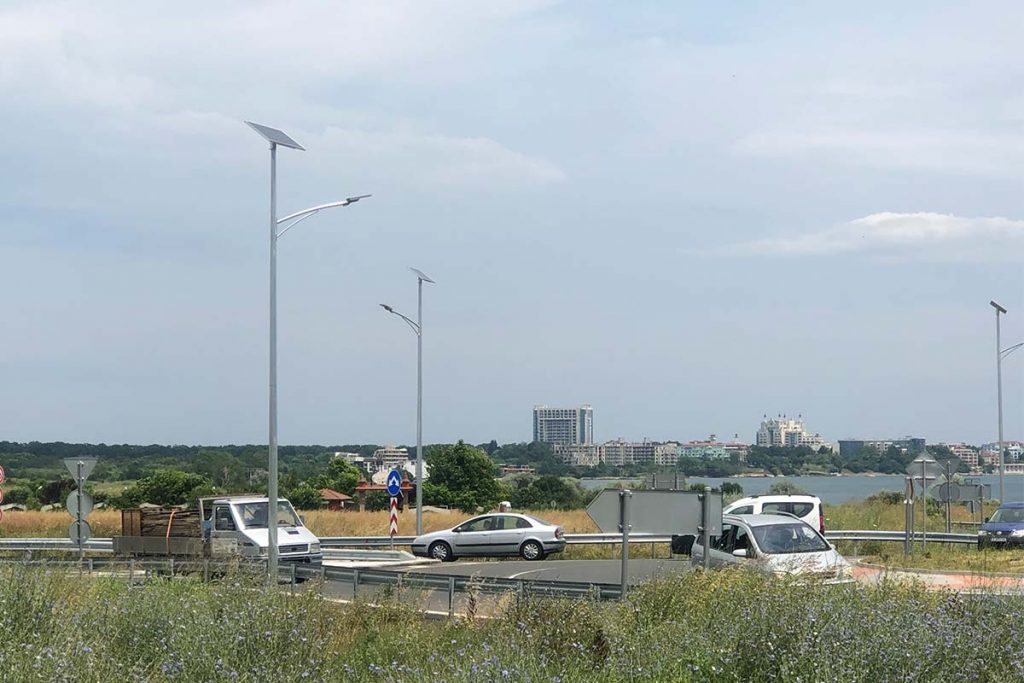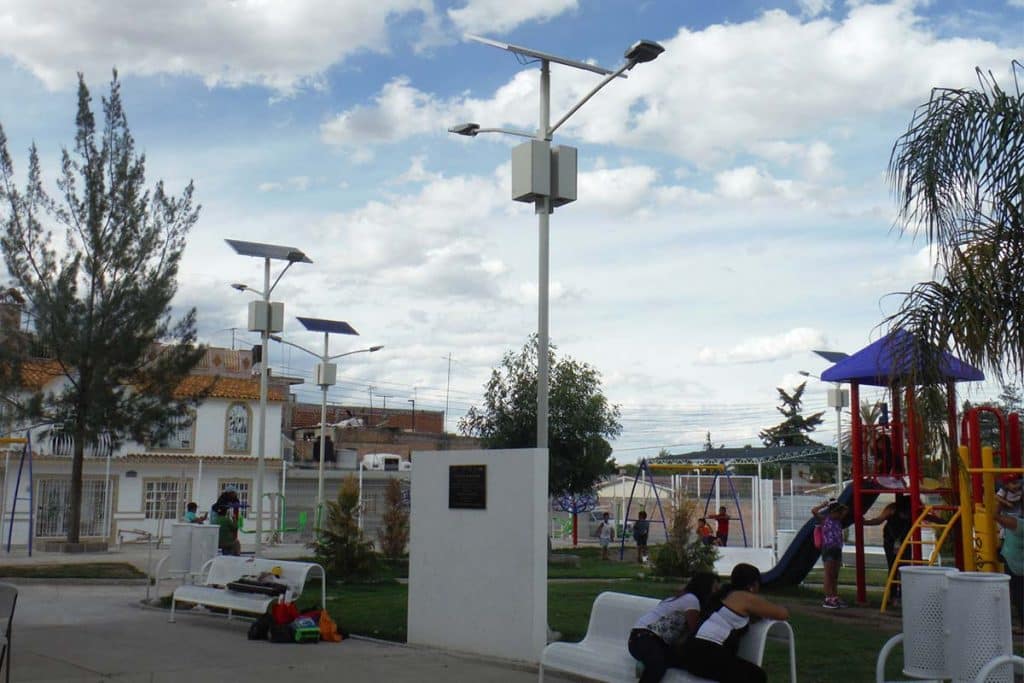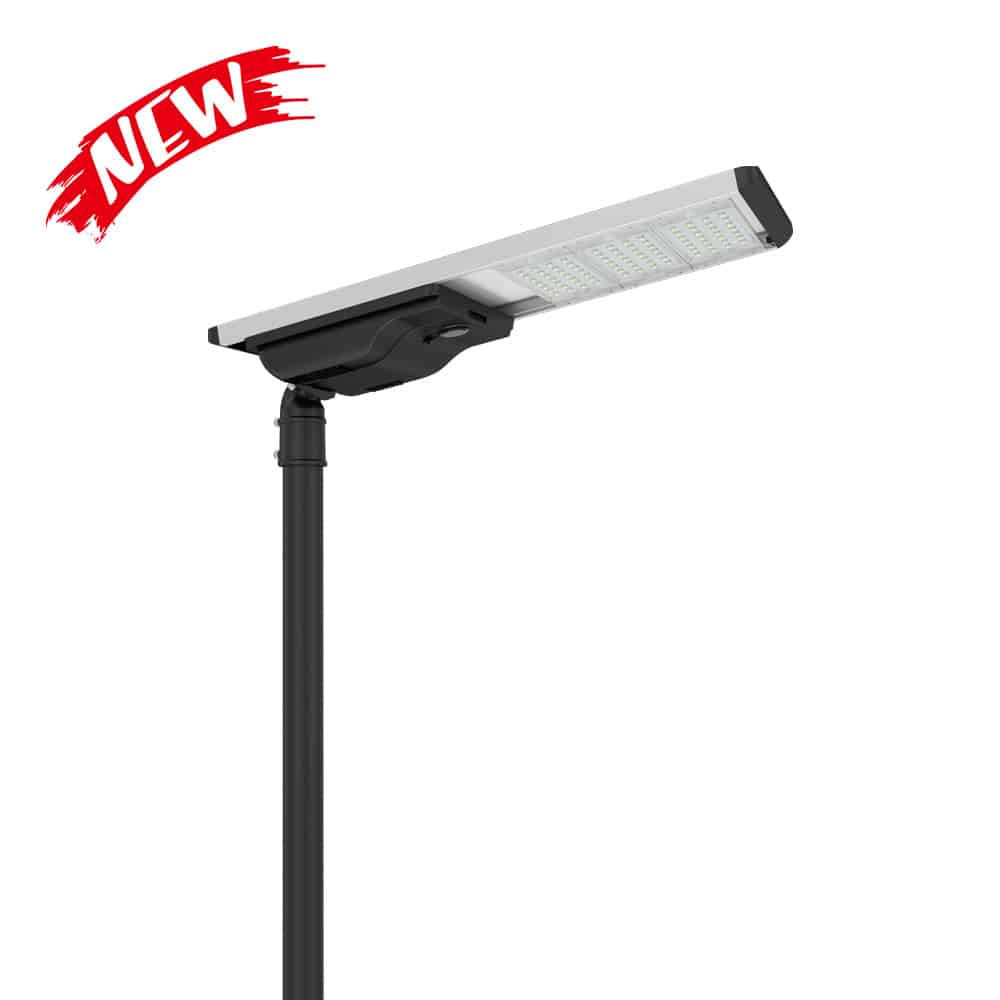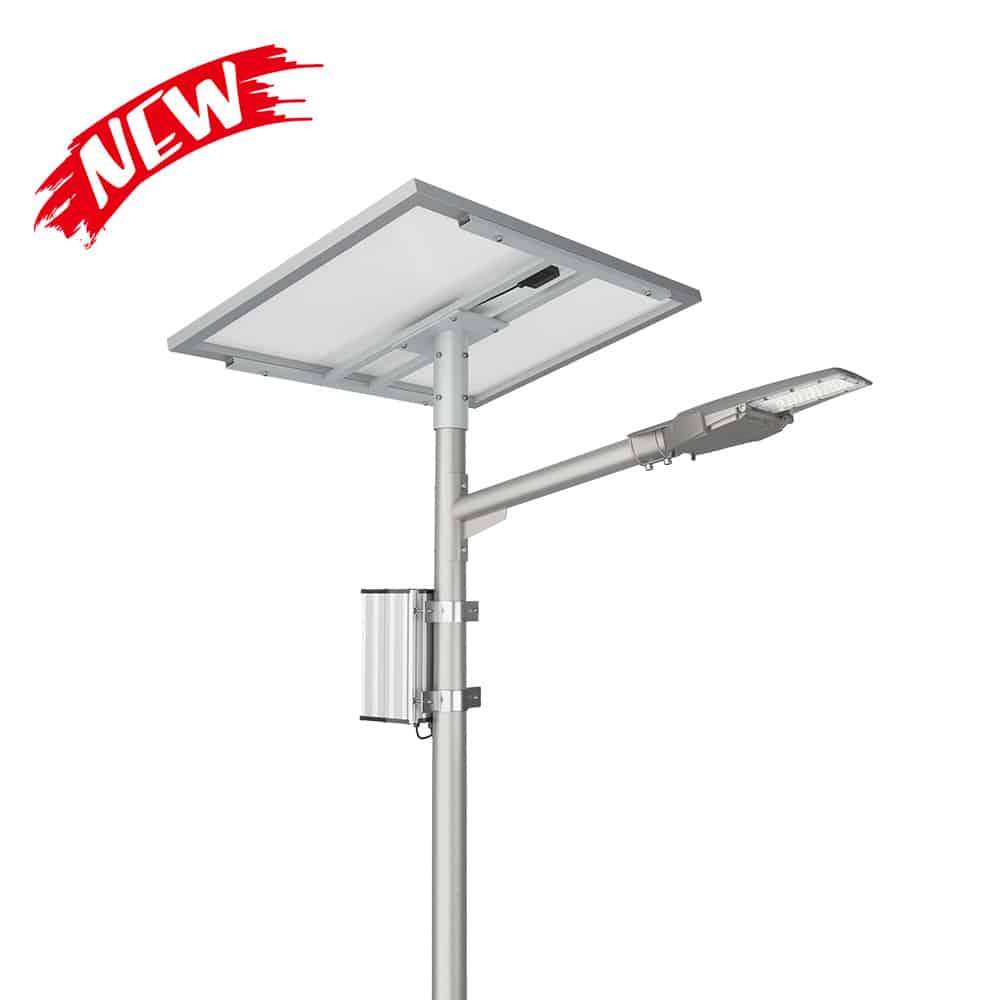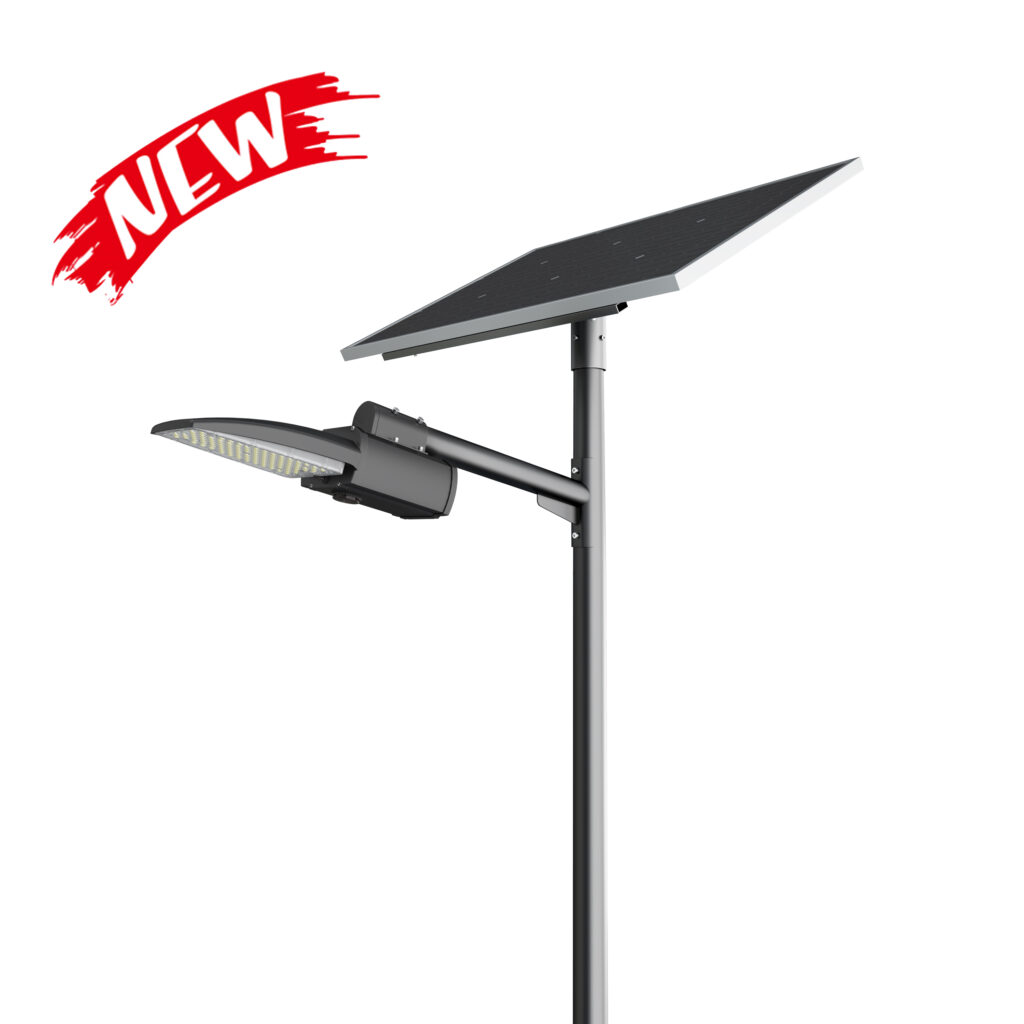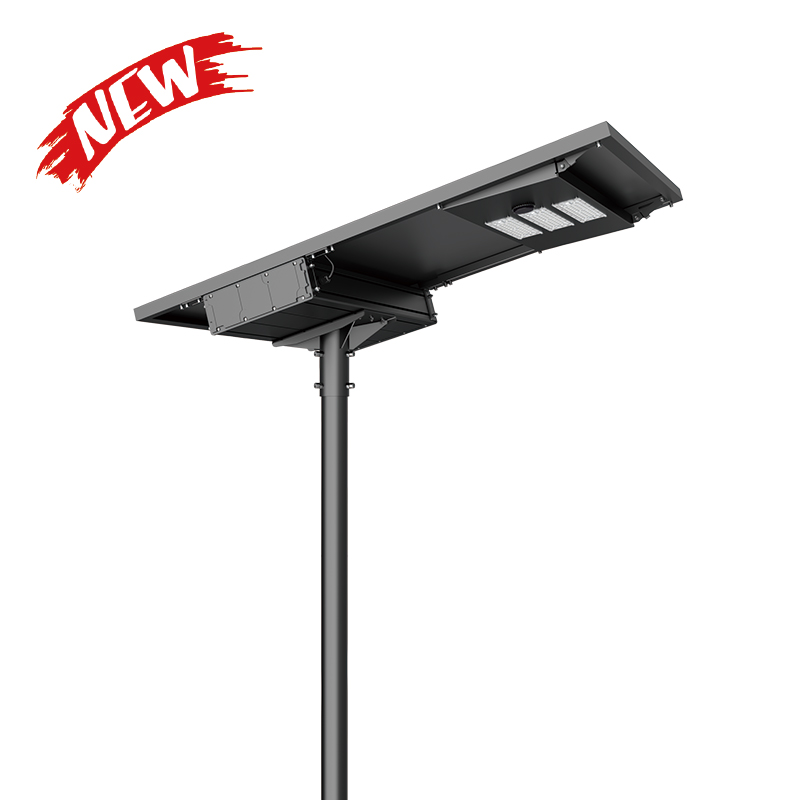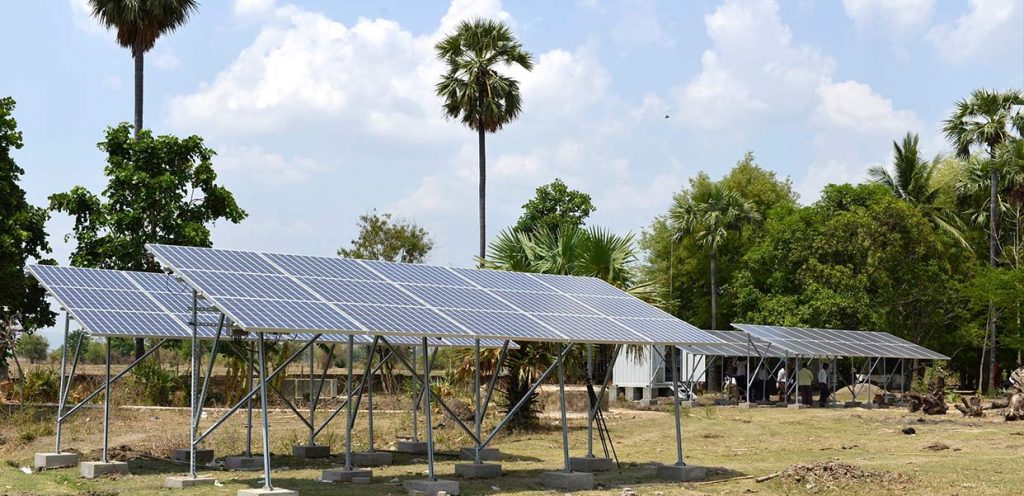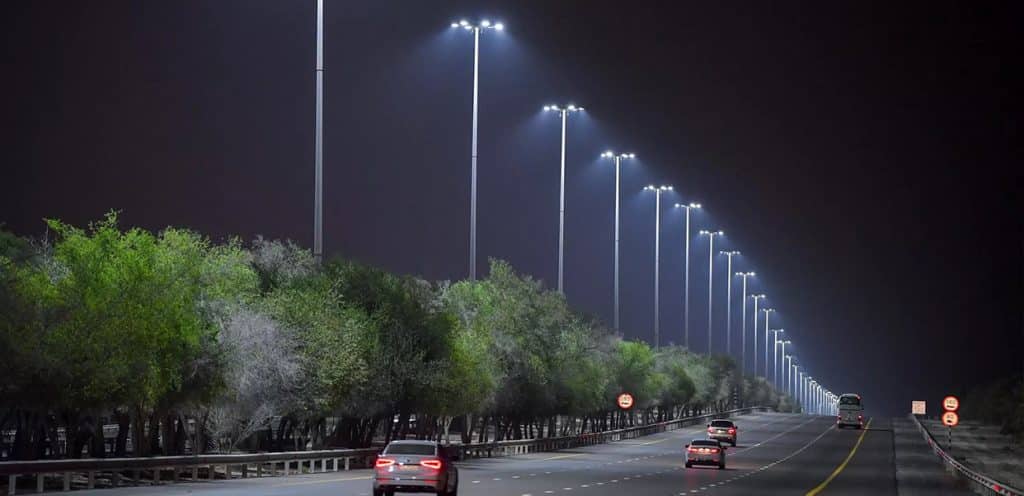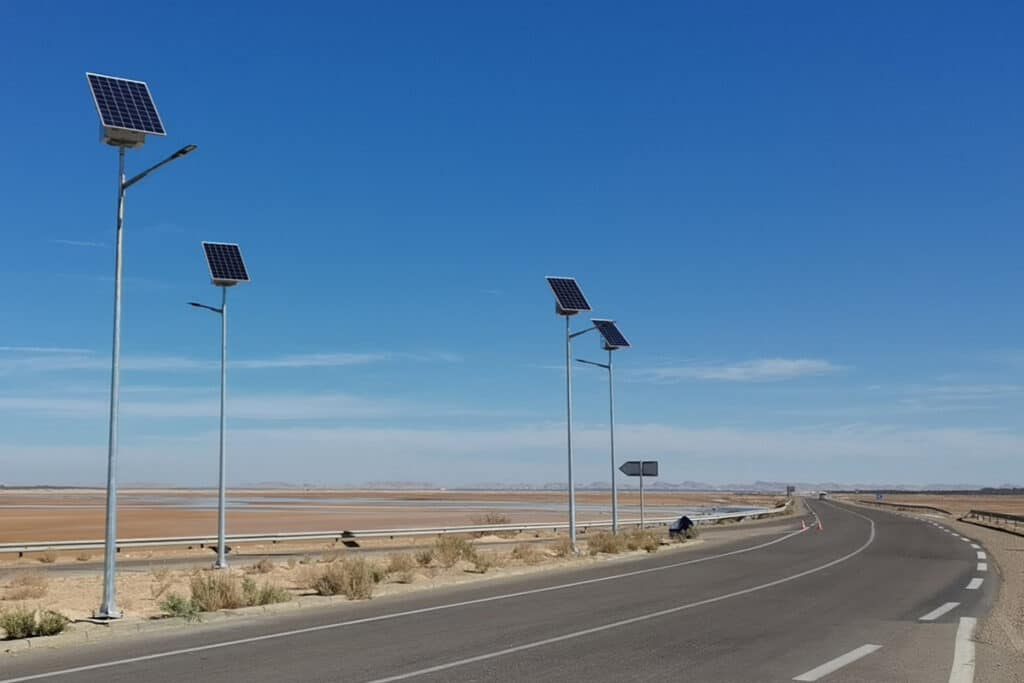Series PV7 Municipal Semi Integrated Solar Street Light
PV7 series semi integrated solar street lights inherits many advantages of fully integrated solar street lights, such as easy installation, energy saving and environmental protection. Its large-capacity battery of 1228-2304WH makes it suitable for extremely rainy weather and can achieve 5-7 autonomous days. PV7 is equipped with independent high efficacy LED lamp heads, and customers can freely choose the right models according to project requirements, such as H series, Rifle series, Falcon series, etc. All these allow PV7 to be flexibly applied to various environments, including municipal roads, urban streets, commercial centers, squares and playgrounds.
Product Features
- Watts: 40-120W
- Light Efficiency up to 180lm/w
- All in two design for quick and flexible installation
- MPPT intelligent controller with up to 96% charging efficiency
- Lithium-ion battery with 8 years expected lifetime
- Customized SSL solutions (battery and LED module) are available
- Support remote setting the parameters of controller
- CE, ROHS, IP66, MSDS certified
- Smart Control: Motion/PIR sensor, or Timer dimming as per client’s request
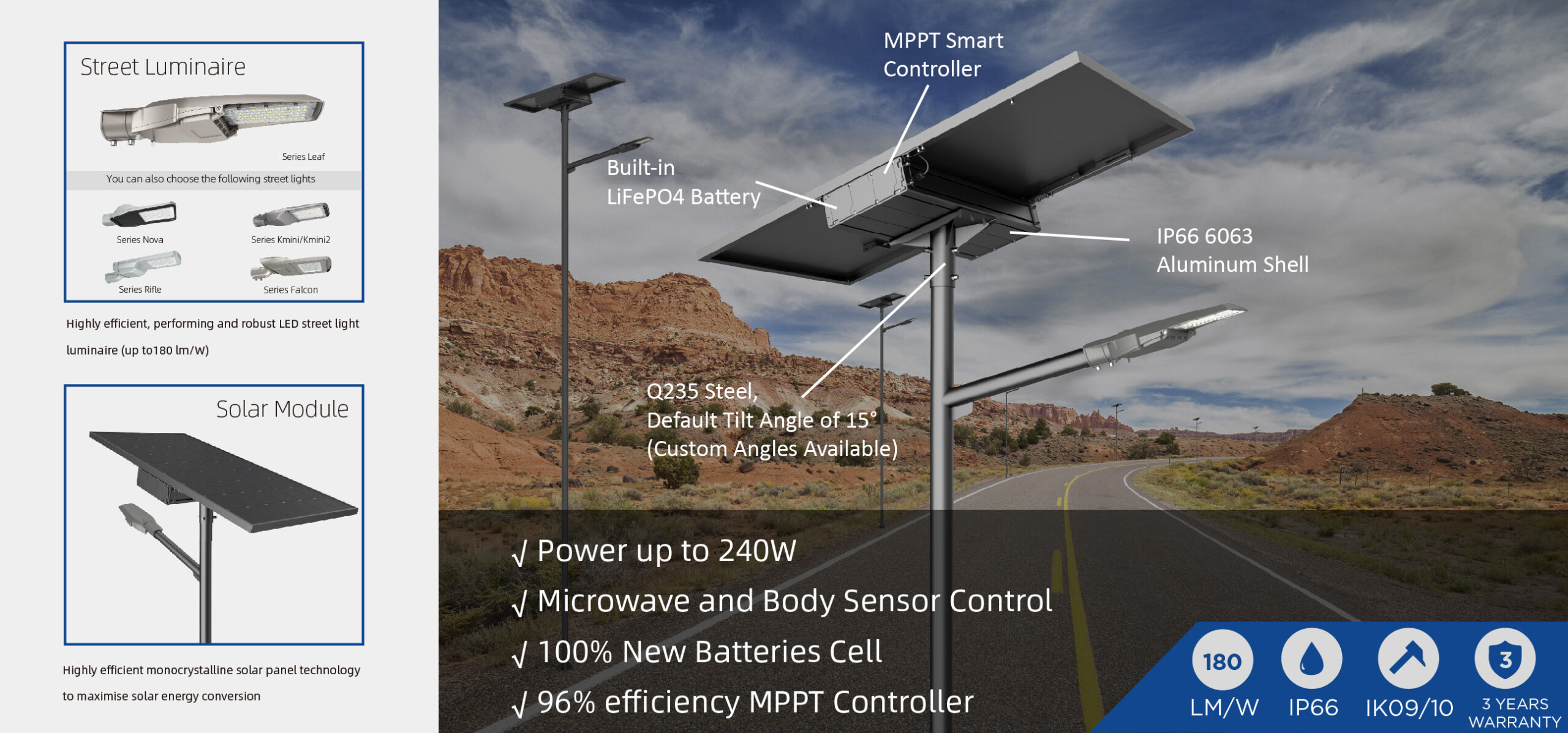
| Series No | Series PV7 Municipal Semi Integrated Solar Street Light |
| Power | 40W, 60W, 80W, 90W, 100W, 120W |
| Efficacy | 155-180lm/W |
| Input Voltage | DC 12/24V |
| Battery Spec | 1228-2304WH |
| Solar Panel Spec | Monocrystalline silicon 160W/180W/200W/240W |
| IP Rating | IP66 |
| IK Rating | IK10 |
| Light Distribution | Type II |
| Mounting Option | Side Entry |
| Warranty | 3 Years |
| Certification | CE, IEC, ROHS, LM79, IP66, IK10, LM80, TM-21, IEC62471 |
| Control | Motion sensor, PIR sensor, Timer dimming, Daylight sensor |
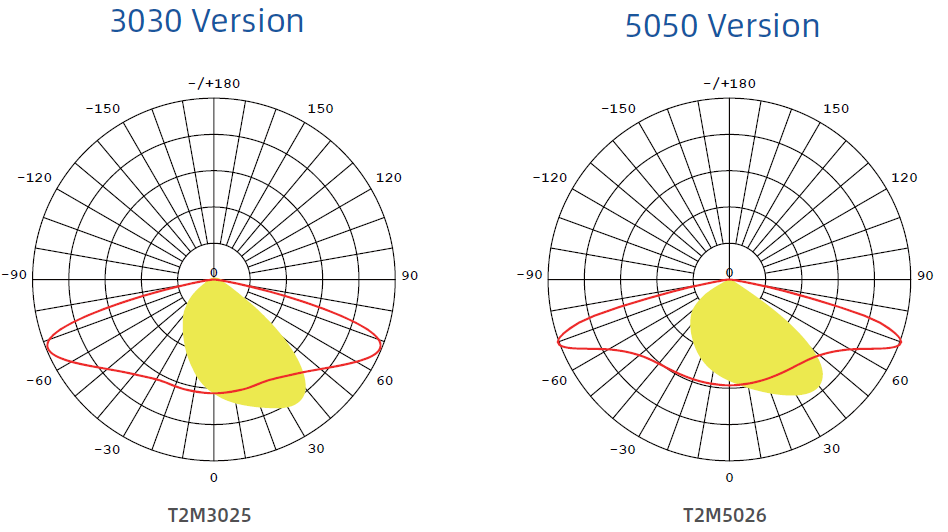
Things you need to know about Integrated Solar Street Lights
As a professional solar street light manufacturer, we can provide different types and functions of solar street lights. One of them is integrated solar street lights. All components of integrated solar street lights, including the solar panel, battery, LED light, and controller, are integrated into a single unit, making it sleek and space-efficient. But all in one solution has its limitation in application such as less flexibility in terms of component upgrades and installation. While all in two solar street light is the intermediate of integrated solar street light and split solar street light. It overcomes these shortcomings, which makes all in two solar street light can be widely used in road lighting, parking lots, parks and plazas, industries, pedestrians, school campus, etc.
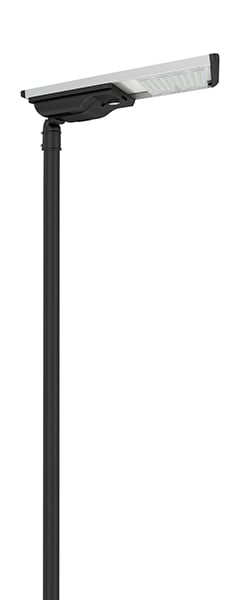
All in one solar street lights
All in one solar street lights also called “Integrated solar street lights”, is a combination of high-efficiency solar panels, lithium batteries, LED modules, smart controllers, PIR or motion sensors, etc. Easy to install and transport.
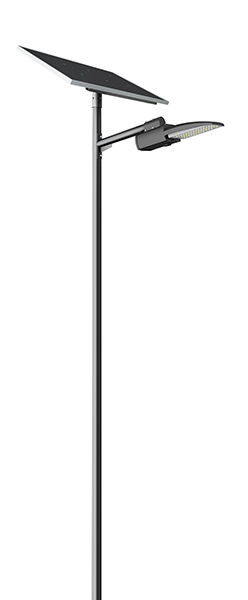
All in two solar street lights
All in two solar street lights consist of two parts: the solar panel and the lamp head, which integrates the LED module, controller, battery and sensor. It offers more flexibility than all in one integrated solar street lights. Although it's less versatile than split systems, but remains easier to install.
| Power (W) | Lumens (LM) | Replacement (W) | Install height (M) |
| 40W | 6200LM | 100W HPS or MH | 5-6m |
| 60W | 9300LM | 150W HPS or MH | 7-8m |
| 80W | 12400LM | 200W HPS or MH | 8-10m |
| 90W | 14400LM | 250W HPS or MH | 9-11m |
| 100W | 16000LM | 250W HPS or MH | 9-12m |
| 120W | 19200LM | 400W HPS or MH | 10-12m |
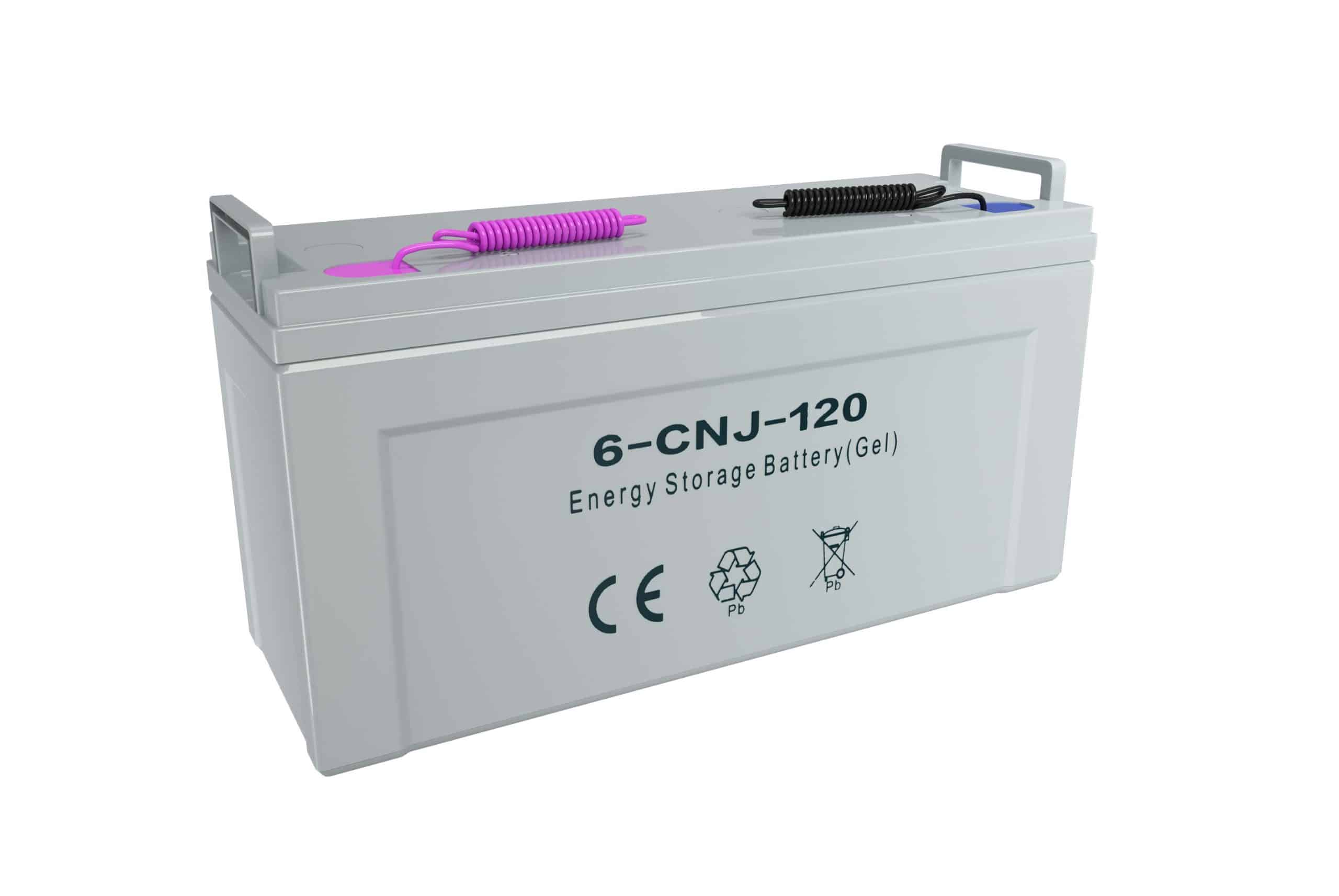
Lead-acid Battery
Lead-acid batteries include electrolyte-type lead-acid batteries (VRLA) and colloidal lead-acid batteries (Gel). They are mainly used in split-type solar street lamp systems and are usually buried underground. They're bigger and cheaper, but they use fewer cycles than lithium-ion batteries.Most lead-acid batteries are 12V or 24V systems.
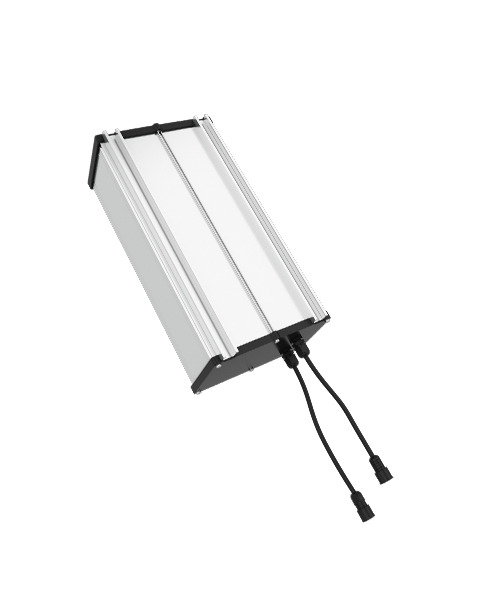
Lithium Battery
Majority of lithium batteries used in solar street lighting systems are ternary lithium batteries and lithium iron phosphate batteries ( LiFePo4). Lithium batteries are more costly and have a longer lifespan than lead-acid batteries.
Ternary lithium batteries provide superior cold resistance compared to lithium iron phosphate batteries. The high-temperature resistance of lithium iron phosphate batteries is better than that of ternary lithium batteries. Consequently, solar street lighting systems in high-temperature regions often use lithium iron phosphate batteries.
Available Li battery voltages for the solar street light system include 3.7V, 3.2V, 6.4V, 11.1V, and 12.8V.
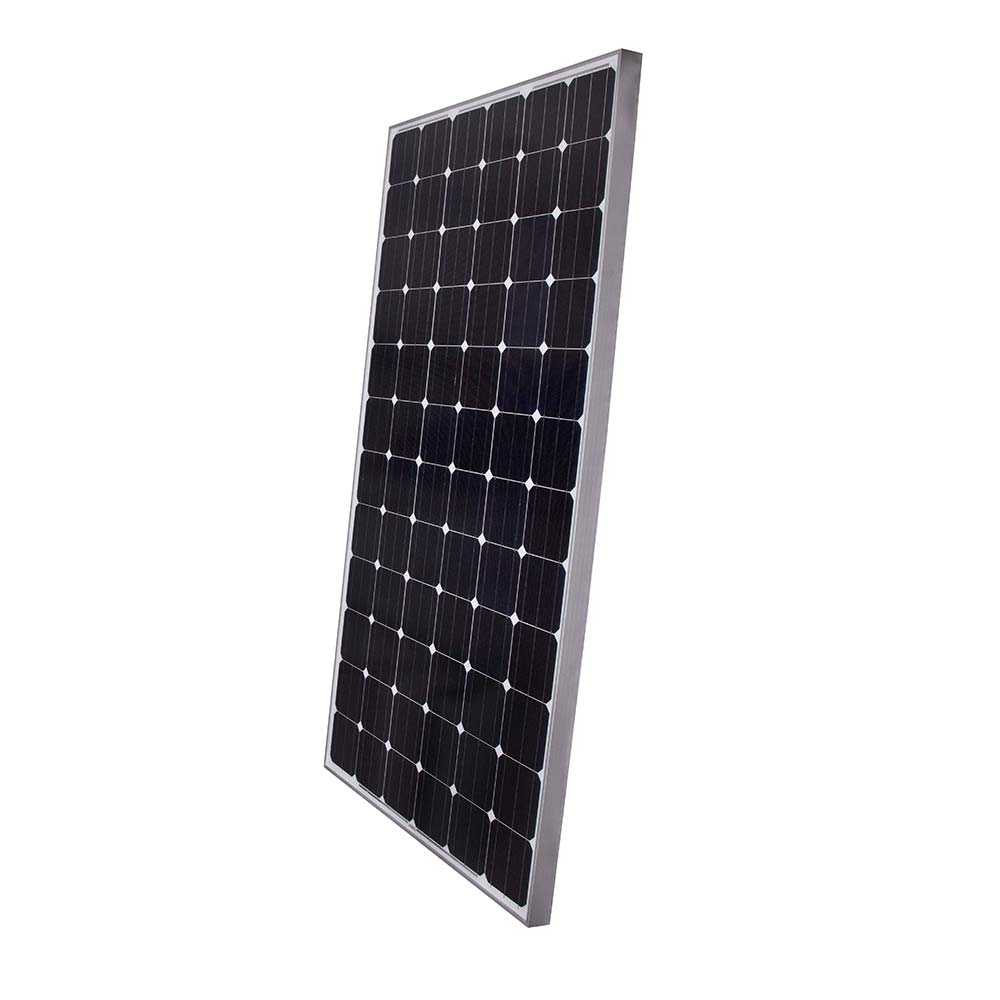
Monocrystalline Solar Panel
The photoelectric conversion efficiency of monocrystalline silicon solar panels is between 18 and 24 percent, with an average of 18 percent. This kind of solar cell has the greatest photoelectric conversion efficiency of all sorts and a lifespan of up to 25 years. However, manufacturing costs are more than for other types.
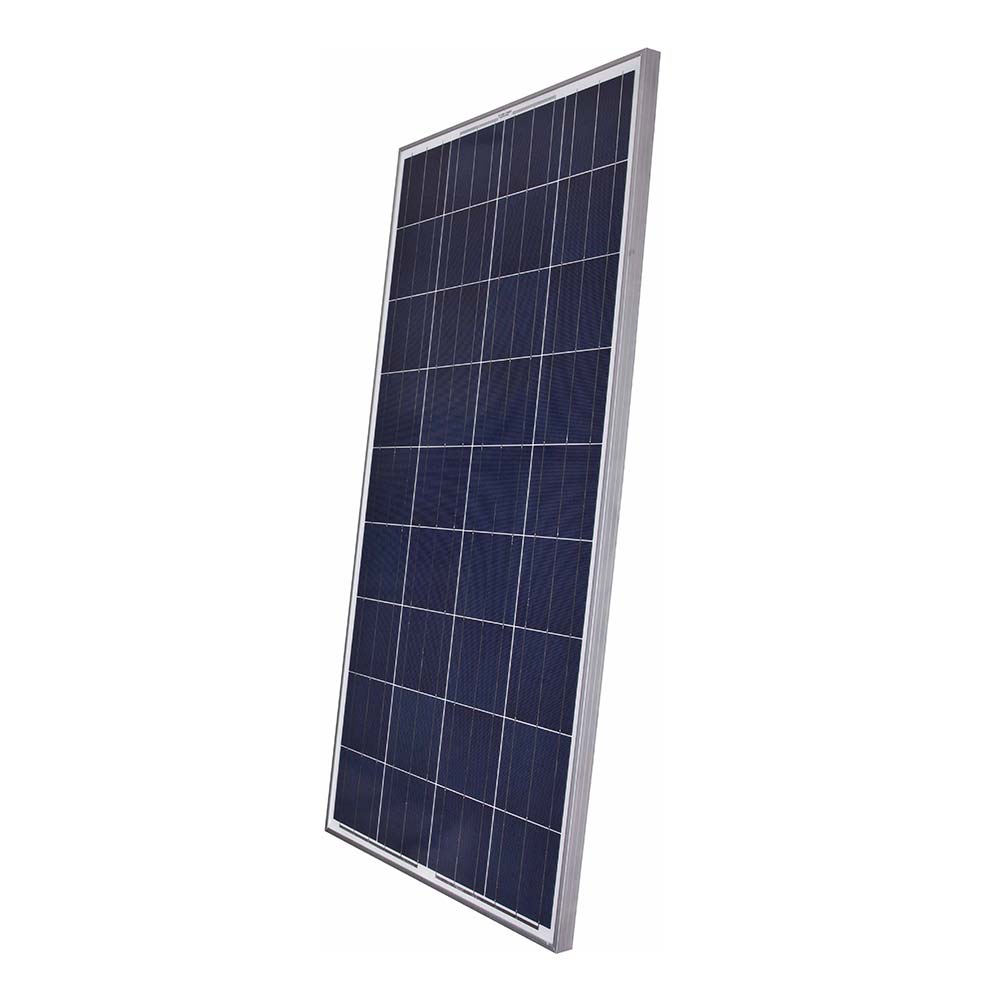
Polycrystalline Solar Panel
The manufacturing method of polycrystalline silicon solar panels is same as monocrystalline silicon solar panels, however the photoelectric conversion efficiency of polycrystalline silicon solar panels is lower than monocrystalline silicon solar panels, it is around 16%. But it is cheaper than the monocrystalline silicon solar panels.
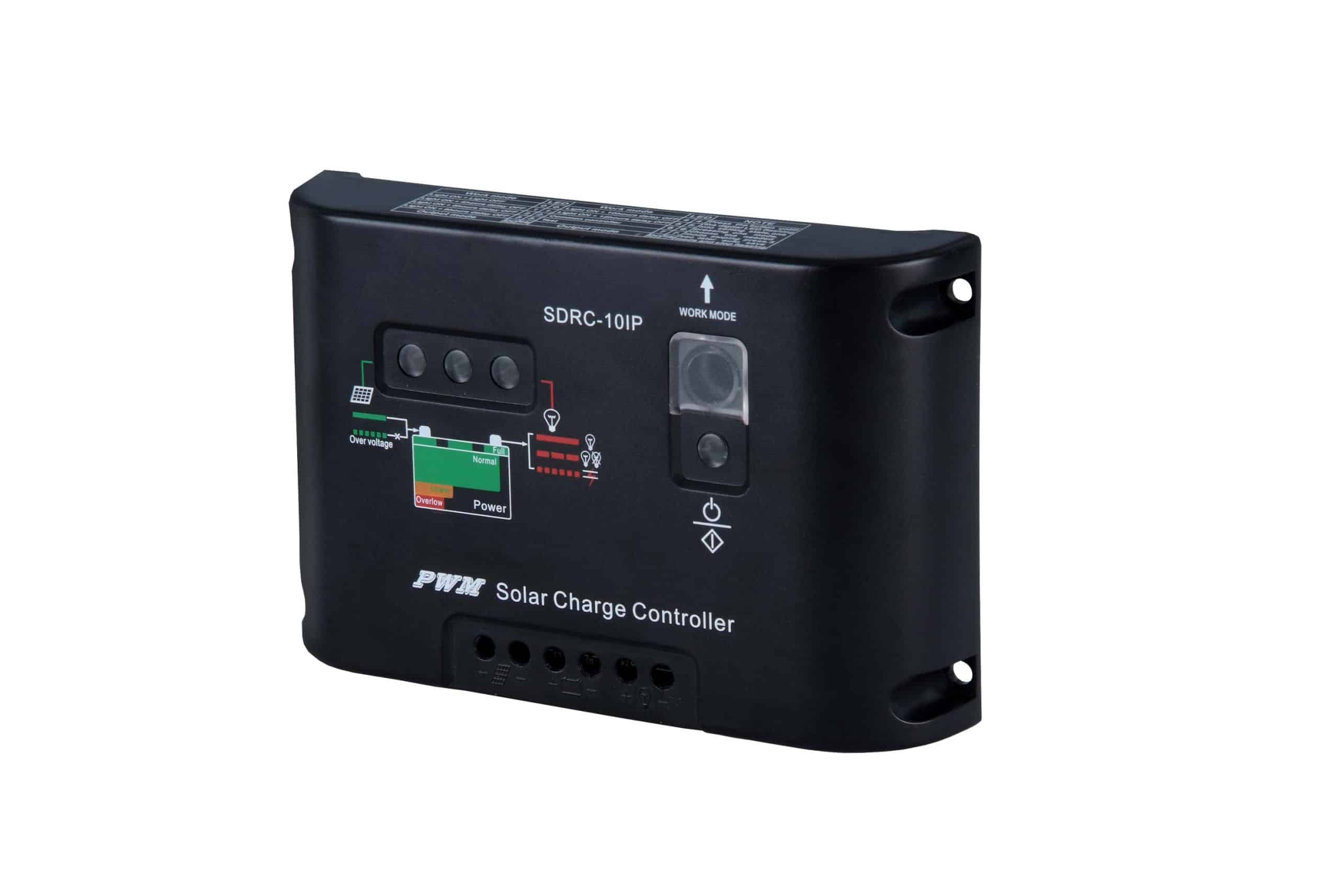
PWM Solar Controller
PWM solar controller is the second-generation technology, and the most on the market now. The working method is PWM control. Compared with ordinary solar controllers, it has improved a lot and can solve the problem of battery dissatisfaction. The charging conversion efficiency is 70%, But the solar panels are not fully utilized.
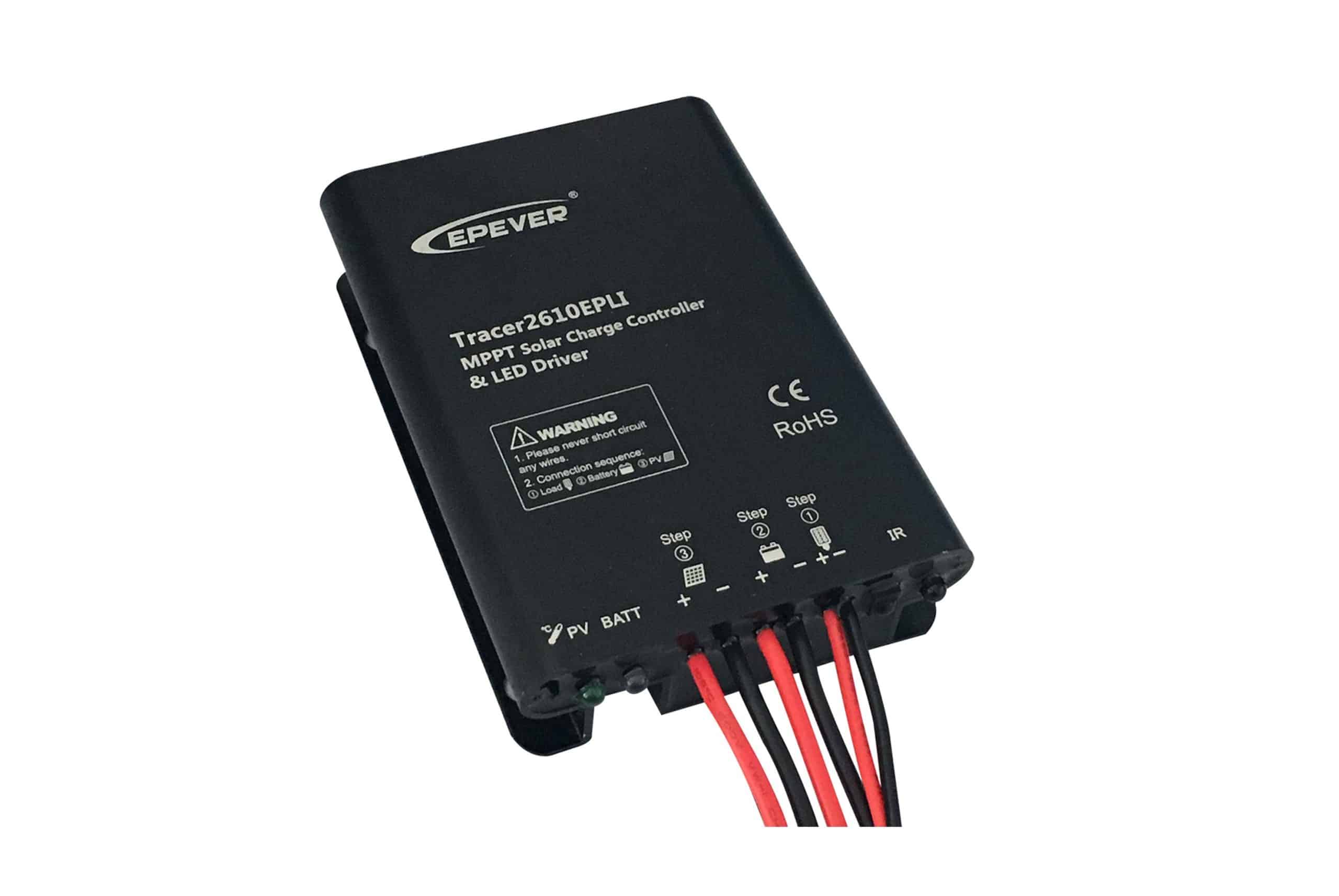
MPPT Solar Controller
MPPT solar controller is a technology of the third generation. It relates to the feature "Maximum PowerPoint Tracking."It is an upgraded product of the PWM solar controller. The MPPT solar controller can detect and maintain track of the voltage and current of the solar panel in real time. Maximum power (P=U*I), ensuring that the battery is always charged with maximum power. The MPPT tracking efficiency is 99%, the system's overall power production efficiency is 97%, and the battery will have a good management.
Let's take PV4 series solar powered street light as a example
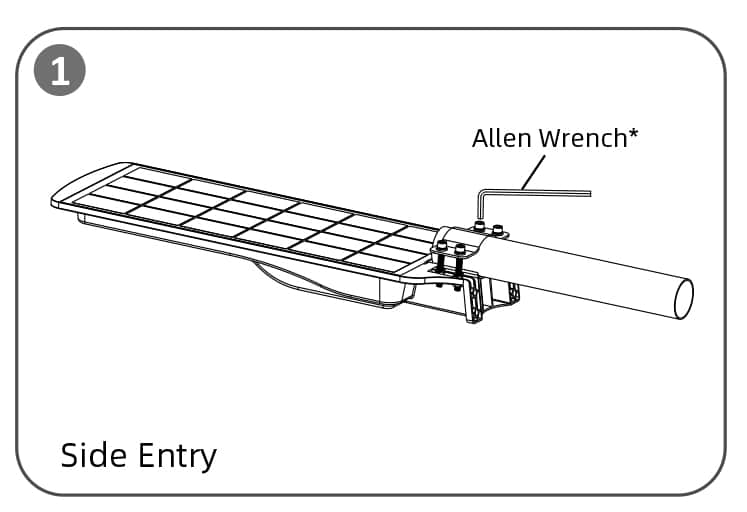
Side Entry Mounted
STEP 1: Loosen the four screws on the bracket, and put the hoop anchor on the top of the bracket, fix with screws but do not screw them all, as shown above.
STEP 2: Insert the lamp into the pole according to the arrow direction, as shown above.
STEP 3: Tighten the four screws of the bracket, The installation is completed.
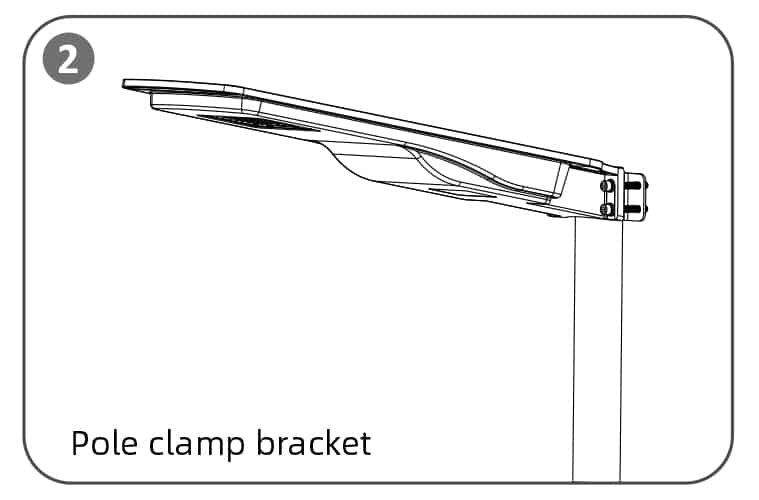
Post Top Mounted
STEP 1: Loosen the four screws on the bracket, but do not unscrew them all, as shown above.
STEP 2: Insert the lamp into the pole according to the arrow direction, as shown above.
STEP 3: Tighten the four screws of the bracket, The installation is completed.
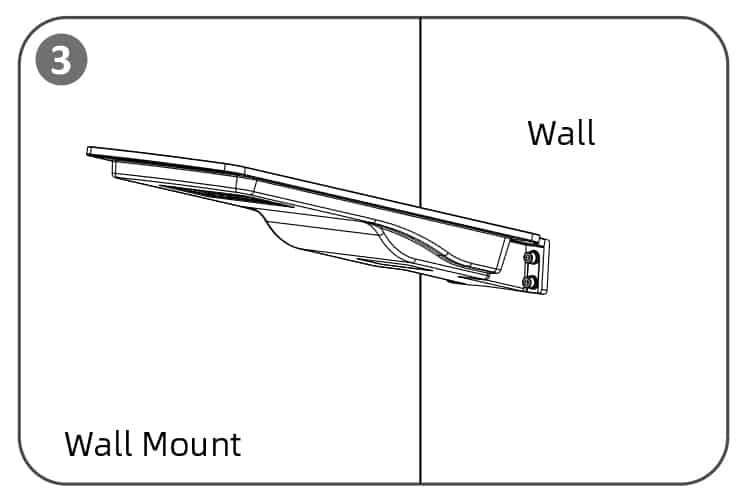
Wall Mounted
STEP 1: Loosen the four screws on the bracket, remove the hoop anchor.
STEP 2: Drill four M8 holes on the wall refer to mounted bracket holes.
STEP 3: Fix the lamp to the wall using fours M8*60 expansion screws, the installation is completed.
Application
Roadway lighting
Paths way lighting
Garden lighting
Driveway lighting
Parking lots lighting
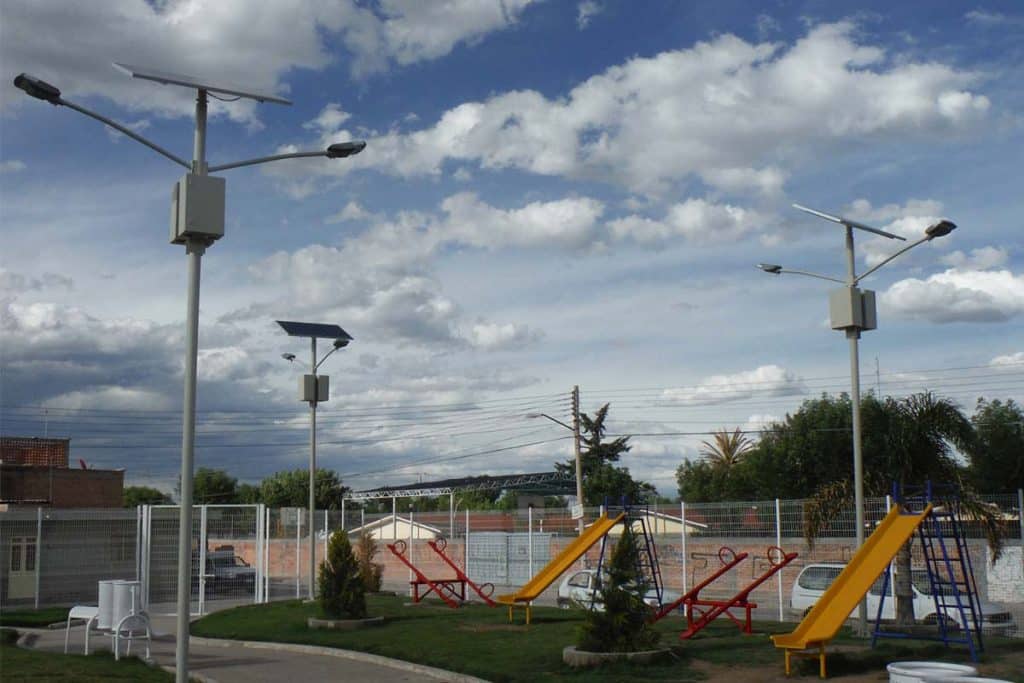
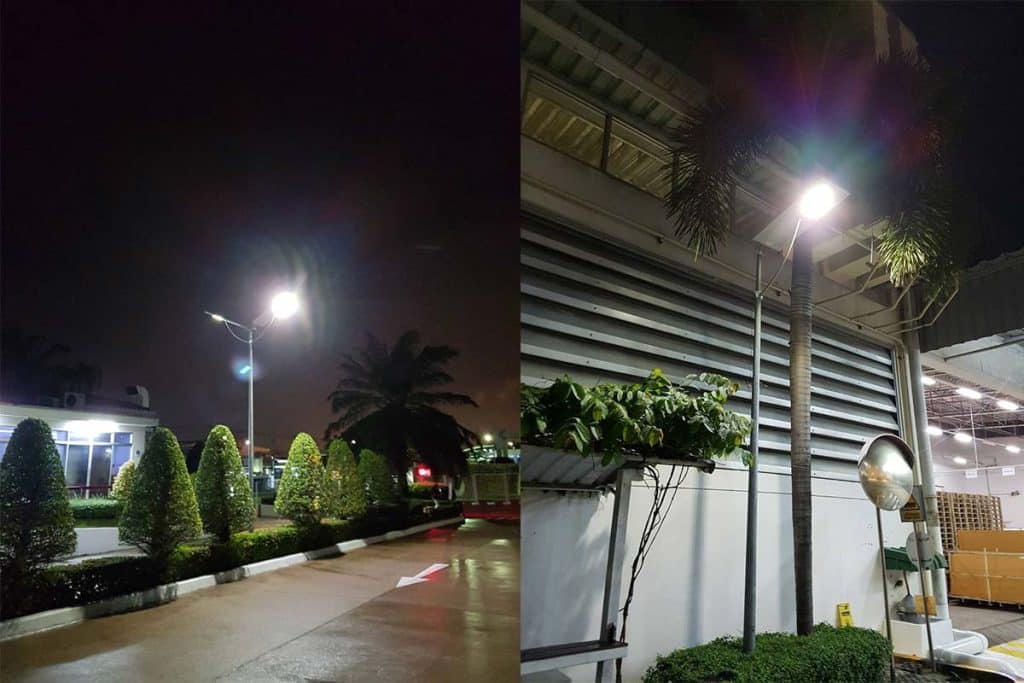
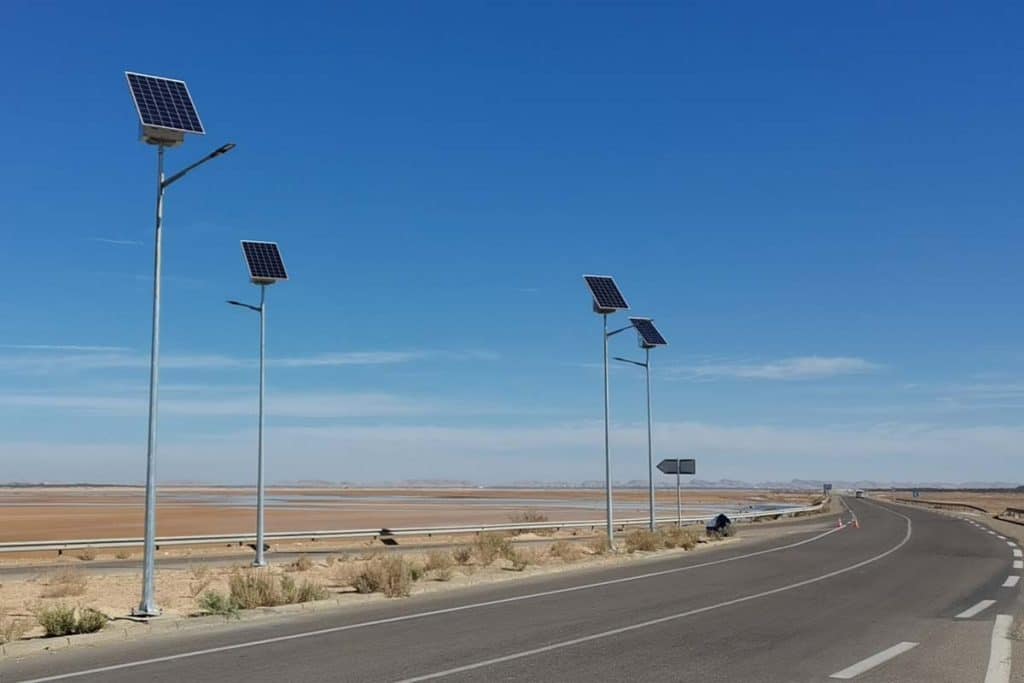
Do you want to customize a solar street light system? Use the form to reach out and we will be in touch with you as quickly as possible.
Structure of Integrated Solar Street Lights

1. LED Module
Using high-efficiency Lumileds LED chips, the luminous efficiency is up to 205LM/W, the same luminous flux, and the power can be reduced by 50%, which greatly reduces the overall cost.
2. Lithium Battery
Integrated solar street light usually use lithium batteries as energy storage. Lithium battery is divided into ternary lithium batteries and lithium iron phosphate batteries (LiFePo4 batteries), Lithium battery is a key component in solar street lights, and the cost is also the highest.
3. Solar Controller
At present, most of the solar street lights on the market use PWM controllers, which are relatively cheap. With the continuous development of technology, more and more solar street lights use high-efficiency MPPT controllers, which are relatively expensive.
4. Sensor device
For integrated solar street lights, sensor devices generally include motion sensors, also known as microwave sensors, human body sensors, also known as infrared sensors, and radar sensors.
5. Solar Panels
Solar panels are divided into monocrystalline and polycrystalline solar panels. the conversion efficiency of monocrystalline is higher and the price is higher, polycrystalline solar panels are a little cheaper but with low efficiency, now most integrated solar street lights use mono solar panels.
Why Choose Solar Led Street Lights?
The solar street light is a new type of road lighting fixture. During the day, monocrystalline or polycrystalline silicon solar panels convert solar sun energy into electricity, which is stored in maintenance-free valve-sealed batteries or lithium batteries through the solar controller, and at night, the solar controller controls the discharge of the batteries for the LED lights to work. It will bring many benefits.
Convert solar energy into electricity to drive LED street lamps to work. Solar energy is inexhaustible.
Solar street lights are powered by 12-36V solar panels, which are within the safe voltage range and will not cause electric shock accidents to people, making them safer to use.
Off-grid solar street lights do not require a grid power supply and can operate autonomously as long as there is sunlight, which is very flexible, so they can use even in remote power-deficient areas.
The solar street light system not need power supply equipment, can be completely automated operation, no need for personnel management, so low operation, and maintenance costs.
Related Products
Related Blogs
Certification Show
As a professional manufacturer of all in two solar street lights, our LED solar street lights have rich certification and test reports, such as CE, ROHS, IP, IK, LM80, and so on.
| COMPONENT | STANDARDS | TEST REPORT | CERTIFICATIONS |
| LED | LM80 | √ | |
| LUMINAIRES | EN/IEC 60598-1 and 60598-2-3 | √ | √ |
| EN/IEC 60529 | √ | √ | |
| EN/IEC 62262 | √ | ||
| EN/IEC 55015 | √ | √ | |
| EN/IEC 61000-3-2 | √ | √ | |
| EN 61547 | √ | √ | |
| EN/IEC 61000-3-3 | √ | √ | |
| EN 62493 | √ | √ | |
| IEC 62321 | √ | √ | |
| TM-21 | √ | ||
| LED MODULE | EN/IEC 62031 | √ | |
| FACTORY | ISO9001,ISO14001,ISO50001,ISO45001 | √ |

